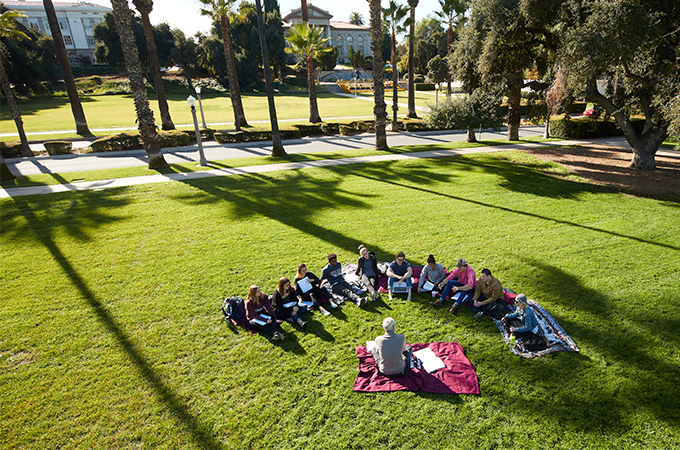When it comes to choosing a university, students have to consider the whole package—what it takes to get there, what their experiences might be, and how the choice could influence their lives after graduation. Katie Olson of the Bulldog Blog sat down with Sara Falkenstien, director of pathways for the College of Arts and Sciences (CAS), to talk about new opportunities at every stage of CAS students' college journey.
Bulldog Blog: First off, what do you mean by “pathways”?
Sara Falkenstien: Pathways refer to the process that occurs when students come into the University, through it, and out of it. While I work on pathways for College of Arts and Sciences, the pathways concept is part of the University's strategic plan, North Star 2020, and applies broadly across the University, including to pathways at the U of R School of Business, which serves working professionals.
At the College of Arts and Sciences, I’m working on the front end of students' experience with Admissions’ Associate Director for Transfer Recruitment Kylie Mulder and Associate Dean of Student Engagement David Schrum, and we’re forming a task force of faculty members who visit community colleges in a targeted way to offer students individual advising about coming to the University of Redlands. They talk to individual students about what it would look like, what the outcome would be, and how to get there. We also have agreements with a number of local school districts, such as Redlands Unified and most recently Corona-Norco, facilitating admission and guaranteeing scholarships for qualified students.
For our current and graduating students, some pathways programs already exist—for example, the College of Arts and Sciences has a relationship with the U of R School of Education so that College students interested in becoming a teacher can be enrolled in both schools. Essentially, if these students plan correctly, they graduate with an undergraduate degree and make progress towards a teaching credential. With careful advanced planning, some students only need to complete student-teaching and additional state testing the year following graduation to earn their credential.
Our newest pathway is to the Geographic Information Science (GIS) master’s program. Qualified students can apply during their third year at the College to gain a solid understanding of geographic principles, improve their technical skills using GIS software, and set up a smooth transition to obtain their master’s degree during a fifth year at Redlands.
BB: Are there post-graduation pathways outside of the U of R?
Yes, we have established fellowships, scholarships, and partnerships with other institutions. For example, we have an Early Assurance Program (EAP) agreement with Western University’s School of Pharmacy and an articulation agreement with the Keck Graduate Institute (Henry E. Riggs School of Applied Life Sciences) that facilitate our students’ admission, for example requiring fewer letters of recommendation, priority consideration for scholarships, preference for seats in summer programs, and/or waived application fees.
BB: What are your main responsibilities as director of CAS pathways?
Falkenstien: I do a lot of logistics and partnership planning. I spend time meeting with faculty and external partners, talking about establishing processes to help students get from one part of their academic journey to another.
BB: Was your position created in response to a growing population of transfer students?
Falkenstien: Yes and no. I think some students are coming to college at an older age due to the affordability and access of community college. We have to think about how we’re going to attract new groups of students, and one piece of that is making sure transfer students understand what Redlands has to offer.
Pathways can definitely benefit nontraditional students—say, students who have previously served in the military or are working professionals. The transfer student experience is different because they’re typically coming in with a certain number of credits. We have a number of faculty in existing programs who have innovative and exciting ideas they would like to pilot for transfer students. We hope to be able to talk more about that in the coming months.
BB: What misconceptions do students have when they approach you about pathways?
Falkenstien: I think the majority of them are just realizing what pathways are, and they’re pleasantly surprised when they find out that we’ve been thinking about these opportunities for some time. I also partner with the Office of Career and Professional Development and work with the CAS faculty fellows. The work that so many of our faculty are engaged in through capstone courses or formal or informal advising and mentoring is tremendous.
BB: How do students learn about the pathways available for them?
Falkenstien: A lot of the discussion about pathways at Redlands has historically been informal. We are, however, trying to be more intentional about the messaging to highlight these kinds of opportunities. For example, we are hosting an Open House event with the School of Education on March 9 for any CAS student interested in becoming a teacher, and we are sending out targeted messaging to students about the new GIS pathway. Students today tend to be inquisitive about what they’ll be able to do with their education, and offering pathways is a great way to help them think about and plan for their futures.
Learn more about the University of Redlands.






